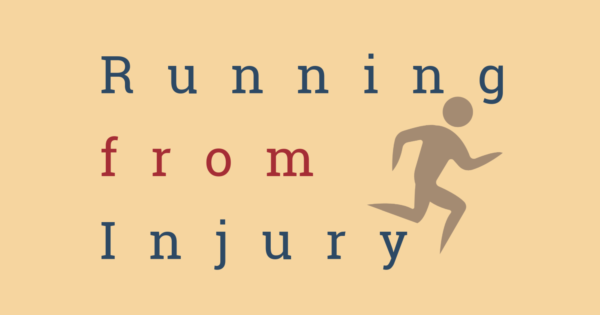As a physical therapist, this is my motto. This also applies to runners. In running, the idea is to move quickly to propel the body forward while being upright. If you are running, and you core is weak, while your legs are strong you are going to run into some issues. You are going to hurt yourself.
Think of a pogo stick, that toy from our childhood. A pogo stick is basically a spring attached to a post that is surrounded by a stable base with handles and footrests. If the base is made of a strong, stable material such as steel, or aluminum, the user can propel themselves upwards, and if skillful enough, hop along. If the base is made of a less stable material such as cardboard, it is going to buckle and fold as the user tries to use it to hop and propel themselves forward.


Now apply the concept of a pogo stick, with a strong spring and post to your body. Even if your legs are strong, if your base is weak, when you try to propel yourself forward, your base (aka, your core) is going to buckle. As a result your body will make a lot of aberrant movements that over time will wear down on your body and result in injury.
There is evidence that core strength may help to prevent injuries in certain athlete groups (here). There is also research to suggest that a good core strength and stability exercise program can help to prevent lower extremity injury in a more general population (here). Specific to those suffering from patellafemoral pain syndrome, is some evidence that improved core strength may help with knee pain (here).
Before I get too carried away with exercise, let me speak a little about core strength, core stability, and the difference between the two. Core strength is the strength of the muscles in your trunk and hips. Core stability is the ability of those muscles to work effectively in stabilizing the trunk for one to perform functional movement (think lifting, running, and day to day activities).
Endurance athletes doing longer workouts, may have difficulty fitting core exercises in to their routine. If you only have 45 minutes, or an hour to workout on a weekday, you may choose to spend that time doing the endurance workout of your choice (for me, it’s typically running, biking, or swimming). However, spending a few of those minutes on your core may pay dividends over the course of time as you may experience fewer injuries, and be able to run a little faster.
Here are a few favorites:
- Quadraped progression
- Front and side plank
- Front and side plank with a leg lifted
As a challenge, planks can also be done with an exercise ball:


Since there is a rotational component to running, exercises that involve rotation, and work the obliques can also be effective:
Supine rotation: Lie on your back, with your arms out to the side so that you look like the letter, “T.” Lift your legs so that your hips and knees are bent. While keeping your shoulder blades on the ground, let your legs fall over to one side. Remember! Keep your shoulder blades on the ground! Otherwise you are just rolling around. Once you get to your limit, bring your legs back to he middle, and repeat on the other side.



Plank rotations with the exercise ball:
Start off on a plank position where the exercise ball is under your feet. Lift one leg up and behind you. Then bring that leg down, and across your midline – almost as though you were going to tap the ground next to the other side of the ball. Repeat, as many times as you can tolerate. Then switch sides.



There are many more exercises out there. Classes such as yoga and pilates can also help to improve core strength. So look around you, and maybe grab an exercise ball.

Great post, but I would eliminate the last 2 exercises. Too much spine flexion and rotation which increases disc injury risk.
Thank you for your input. I have chosen to keep the exercises on my blog. I understand how bending and twisting can be harmful, especially to people who have an acute injury such as a facet or disc injury. However, during normal movement the spine does rotate and flex. During running the trunk does rotate in the transverse plane. It is important for people to be able to stabilize their spine and have control over these movements while they are performing them. I believe that these exercises are safe as long as they are done carefully, and slowly. As stated before, these exercises should not cause pain. If they do cause pain, or if one does have a pre-existing back injury. They should consult with the healthcare professional of their choice before attempting these exercises.